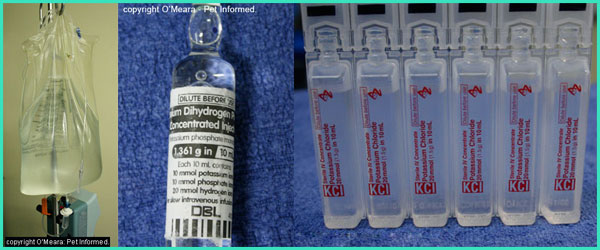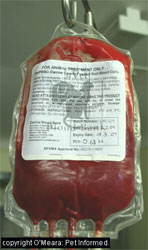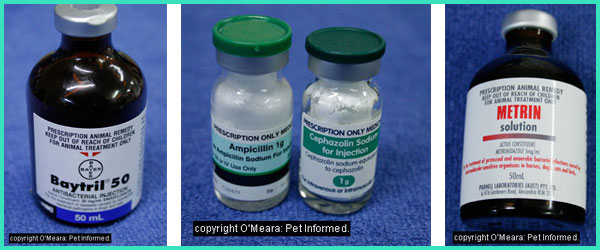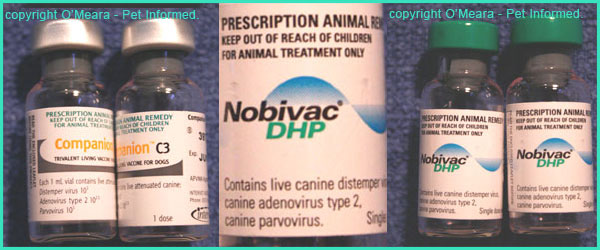Got to beat the time!
****************************************************************
An infected dog with parvovirus
Canine parvovirus, or just “parvo”, is a contagious virus which affects dogs. Coming to light around the 1970s, it usually manifests itself in two different ways: instestinal and cardiac. A dog with the intestinal form will usually show symptoms like vomiting and bloody diarrhea. Dogs with the cardiac form might experience respiratory and cardiovascular problems. The disease is most serious in puppies, for which an untreated parvovirus has about a 90% mortality rate if it is not treated, however with treatment, the survival rate is over 80 percent.
Parvovirus is contagious to dogs only—not to cats or people. Any age, breed, or sex of dog could be affected by parvovirus. However, infection with parvovirus does not automatically mean illness. Several factors such as age, environment, stress, parasites, and general health status of each individual dog infected could affect the severity of the disease. The degree of illness could range from very mild to unapparent to very severe, often resulting in death.
Parvovirus is resistant to extremes of temperature (i.e., it survives freezing and extreme heat) and is unharmed by detergents, alcohol, and common disinfectants. Direct transmission occurs when an infected dog comes in contact with a healthy dog. The virus is found in heavy concentration in the infected dog’s stool. Because dogs will usually sniff where another dog has eliminated, this fecal-oral transmission is the most common method of transmission. The virus particles can be easily spread by hands, shoes, clothing, or other inanimate objects (fomites)—this is an indirect source of transmission.

Aetiology
The disease is caused by a highly contagious virus that is transmitted mostly by dogs orally contacting infected feces. Being a virus, they contain only DNA or RNA, and are not capable of reproducing unless they invade a cell. Once inside the cell they take over and force the cell to produce so many new virus particles that the cell eventually bursts, releasing these new virus particles into the bloodstream and tissues so they can invade other cells. The only thing that can stop this is the immune system.

Canine parvovirus seen under the electron microscope
The virus has 3 basic strains:
1. CVP2 which was the first one found in 1978
2. CVP2a came on the scene in the early 80's
3. The strain most prevalent today is CVP2b
Eventually a new strain will appear because the virus will adapt to the immune system of dogs.The parvovirus can longer in the environment for many months, allowing it to affect other dogs. It can withstand common household disinfectants (except bleach) and can withstand freezing winter temperatures. It can be spread on the hair and feet of dogs, in addition to shoes, clothes, and eating utensils.
As many as 30 billion parvovirus particles can be shed from the intestines of an infected dog in every ounce of stool. The highest concentration of virus in the stool is seen when the infected dog is showing signs of illness. A dog can, however, be a source of infection to other dogs without it having observable signs of illness (the disease may be incubating). Transmission can occur for at least 3 weeks after a dog becomes infected with the virus. Chronic “carriers” are not known to exist as in other viral diseases. Parvovirus in the environment can infect susceptible dogs for as long as 6 months once shed in the stool.
Pathophysiology
Parvovirus has a predilection for rapidly dividing cells (similar to cancer). The rapidly dividing cells in a dog are the intestines, bone marrow, and the immune system. When the virus infects these areas the lining of the intestine literally dies, the bone marrow cannot make red or white blood cells in adequate quantity, and the immune system can become impaired.
Initially the virus replicates in the tonsils (which are lymph nodes) after oral ingestion. The virus rapidly multiplies and enters the bloodstream within a few days. From here it spreads to those parts of the body that contain rapidly dividing cells as mentioned above.The main cause of death in parvo infected dogs is septicemia. Poisons from bacteria that are attacking the susceptible lining of the intestines release toxins into the bloodstream. These toxins add to the complications of a puppy that is dehydrated from vomiting, diarrhea and not eating, is hypoglycemic from not eating, and has electrolyte imbalances from vomiting and not eating. The bodies immune system becomes overwhelmed and death ensues if treatment is not instituted early and aggressive enough. Even if toxins are not released by bacteria, the dehydration and electrolyte imbalance that occurs can lead to shock and eventual death.
**In actuality, whether a pup recovers from the virus depends on a race between parvovirus particles causing septicemia and dehydration, and the immune system's ability to neutralize the virus. Fortunately, for most pups that get medical care, the good guys win the race.
Signs and symptoms
Viral shedding in the feces begins 3-4 days after infection and peaks when clinical signs appear.
The majority of dogs presented with parvovirus show signs of fever, lethargy, vomiting, diarrhea, and lack of appetite. In severe cases the diarrhea is very watery and frequently bloody, with a telltale odor. They are very ill, with significant abdominal pain. The virus is so strong that it literally causes the lining of the intestines to slough. It is painful to eat, and with the severe diarrhea and vomiting that is present, they rapidly become dehydrated. The also have a disruption in their electrolytes (sodium, potassium, chlorine) that adds to the weakness.
In the peracute form of this disease the virus attacks the heart and causes rapid death. Fortunately, it is rare to encounter this nowadays.
Severely infected dog with CPV
Diagnosis
- Parvovirus test kit ( ELISA test kit)
- Complete blood count
- Serum biochemistry
The ELISA may be positive on the first day of clinical signs and for 3-4 more days. The ELISA may be false negative if run too early in the disease course; it should be repeated if the history and clinical signs support the likely presence of the virus. Leukopenia or lymphopenia is seen in most infected dogs during the course of illness. Neutropenia is suggestive of the disease. Hypoalbuminemia, hyponatremia, hypokalemia, and hypochloremia may be seen. Serum ALT levels are increased in some dogs.
Diagnosis may also be confirmed by a 4-fold increase in serum IgG titer over 7-14 days, detection of serum IgM antibody to parvovirus in dogs that have not been vaccinated within the last 3-4 wk, or the detection of parvovirus particles in the feces using immunofluorescence, immunoperoxidase staining, or electron microscopy.
Parvovirus test kit. Positive infection shows 2 band while negative infection shows only 1 band appeared
Can a dog test positive to parvo and not have parvo?
Yes: these results are termed false positive results. It tends to occur when animals are tested that have been vaccinated 4-14 days beforehand. When an animal is vaccinated with a live vaccine parvovirus, this vaccine parvovirus replicates in the cells of the dog's intestines, similar to that which occurs in real parvo infection (the vaccine virus just doesn't cause obvious disease). Replicated vaccine virus particles (whose antigens mimic those of the real virus) enter the feces and will be detected as a positive on the parvo ELISA test. Thus, an animal that is vaccinated and protected against parvo will appear to have been infected with the disease.
Can a dog test negative for parvo and have the disease?
Yes: These results are termed false negative results. They tend to occur for two main reasons:
- the disease process is very early. It takes time (about 4 days) for virus particles to replicate and to start shedding into the feces where they can be detected on parvo testing kits.
- the antibody response of the animal is very high. This tends to occur later in disease. If an animal does not die, infection with parvo will eventually result in a response from the immune system: the immune system will mobilise defensive cells and produce antibodies to try to kill the virus. Many of these antibodies will remain in the bloodstream, but many will also be secreted into the intestinal tract (antibodies are one of the proteins that leak into the gut through the inflamed, ulcerated zones). These antibodies will bind to viral antigens in the feces and this can 'block' the antibodies in the parvo test kit from getting exposure to them. The result is a false negative.
Treatment
Treatment is aimed at maintaining the normal body composition and preventing secondary bacterial infection!!
There is no specific therapy to eliminate the virus. Most dogs recover with appropriate supportive care directed to restoration of fluid balance. Oral electrolyte solutions may be used in mildly dehydrated dogs without a history of vomiting. More severely affected dogs should receive IV fluid therapy (lactated Ringer’s and 5% dextrose with additional potassium chloride [10-20 mEq/L]) to counter dehydration and maintain fluid balance. Monitoring of electrolyte changes is advisable. Most dogs that survive the first 2-3 days of disease recover. Persistent vomiting can be controlled with metoclopramide, 0.2-0.5 mg/kg, PO or SC, qid, or 1-2 mg/kg/day, slow IV).

IV fluid infusion
If the protein level becomes low we institute therapy with additional fluids (called colloids) to combat the problem. Dogs that continue to decline in spite of therapy may also need a blood transfusion because they can become anemic and deplete their protein. We will also treat the internal parasites that can be an integral part of this disease.
 Blood tranfusion |

Example of antibiotic used
Anti-emetic drugs are often used to make puppies feel better (it must be terrible vomiting all the time), to reduce the loss of fluids through repeated vomiting and to get the gut moving again (many work by making the intestines mobile again). They are best given as continuous rate infusions (i.e. given in a constantly-running drip) rather than frequent injections.
Severe ulceration of the gut and abdominal pain is one of the many parvovirus symptoms, which must be managed. Pain relief must be given to these puppies with parvovirus to make them more comfortable.
Generally injectable, opiate drugs (e.g. methadone, fentanyl) are used in these animals to achieve pain control. Oral medications are not kept down. Drugs such as non-steroidals (e.g. carprofen, meloxicam, tolfedine) and corticosteroids (prednisolone, dexamethasone, triamcinolone) are contraindicated in animals with severe, ulcerative intestinal disease.
Because the intestine of these puppies does not move, their stomachs can fill with large amounts of fluid. This bloating and abdominal distension is painful. Simply passing a tube into the puppy's stomach (via the mouth) to release the fluid can relieve this discomfort.
Skin scalding around the anus of puppies with diarrhea is also very painful. The scalding can be reduced by applying waterproof, soothing creams to the perineal skin (skin around and under the anus). Useful creams include vasoline (petroleum jelly) etc.
Special precautions are taken when we treat parvo dogs. They are put in a special area so that we can monitor them closely. They are also isolated so that other dogs in the hospital are not exposed to the virus. Staff members that treat them wear disposable gloves and gowns, and clean their shoes in a special chlorine foot bath to prevent hospital contamination of the virus.
Fortunately, most dogs recover with intensive therapy, although there still is an occasional dog that does not. This may be due to a weak immune system that can not produce adequate antibodies, or a particularly strong (virulent) strain of the virus that we encounter occasionally. Dobermans and Rottweilers seem to be especially sensitive to this virus, and have the most difficult time recovering from an infection.
Prevention
Contaminated areas should be thoroughly cleaned. Household bleach (1:30 dilution) or commercial products labeled for use against parvovirus are potent inactivators of the virus. The same solutions may be used as footbaths to disinfect footwear. Disinfection of hands, clothing, and food and water bowls is recommended. Pups should be kept isolated from adult dogs returning from shows or field trials.
Vaccination is critical in the control of the disease. Variants of the virus have appeared since the disease was first recognized, but current vaccines protect dogs against all strains of the virus. Vaccines containing live attenuated canine parvovirus generally induce more effective immunity than inactivated virus vaccines. The high-titer canine parvovirus vaccines now available effectively protect puppies against viral challenge, even during the period when maternal antibody titers remain high enough to interfere with active immunization but have declined enough to predispose pups to infection. Vaccination of pups should begin at 5-8 wk of age, preferably with a high antigen-density vaccine. The last vaccination should be given at 16-20 wk of age, and annual vaccination thereafter is recommended.

Vaccine against parvovirus
Puppies that are malnourished and/or which harbour other bacterial and parasitic infections in their intestines are prone to more severe parvo infections. Thus, good nutrition and control of intestinal parasites (worming etc.) and harmful bacteria (Clostridia, Salmonella etc.) are important in preventing and reducing parvo severity.
For complete article please visit http://www.pet-informed-veterinary-advice-online.com/canine-parvovirus.html
Sources: Parvovirus, Long beach Animal Hospital, Canine parvovirus, Pet-informed veterinary advice online, The Merks veterinary manual




















1 comments:
Insanely comprehensive :)
Thank you so much,
Now I have something to read during the holidays. This will take a while but well worth it like always
You can read another one here toppetlovers blog
Post a Comment